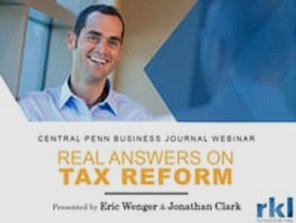Real Answers on Tax Reform
RKL separates the advice you can skip from real opportunities for maximum business and personal tax savings under the new law. We’ve done the deep dive on tax reform so you don’t have to, and we’re proud to share insights and context in a variety of formats for the benefit of business owners and individuals.
Download our 2018 Year-End Tax Planning Guide…
Tax Reform: The Big Picture
Join RKL’s Jonathan Clark and Eric Wenger for one hour of high impact ideas on how individuals, businesses and corporations can maximize their tax savings under the Tax Cuts and Jobs Act of 2017.








